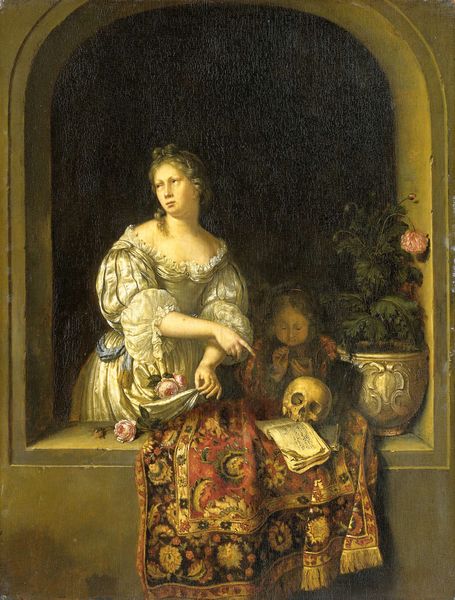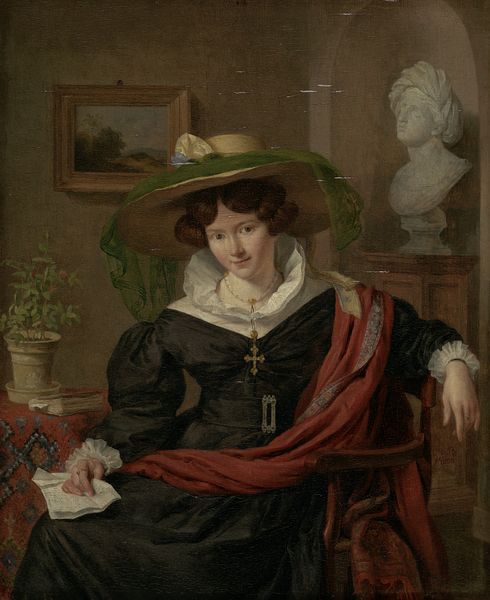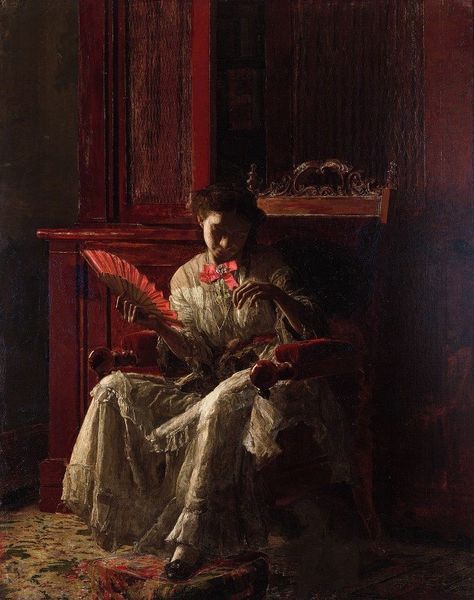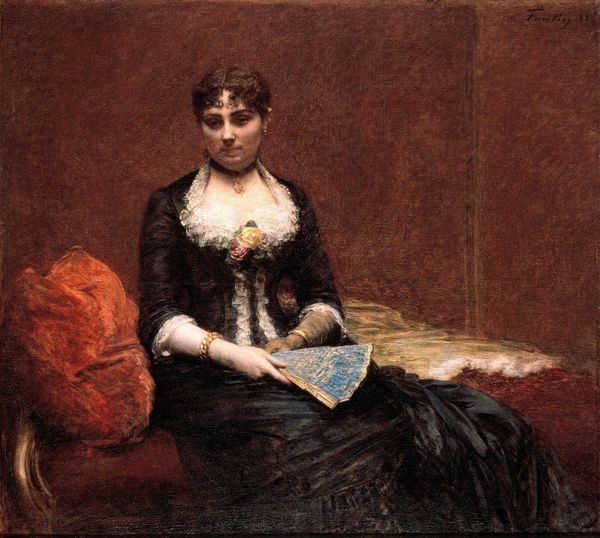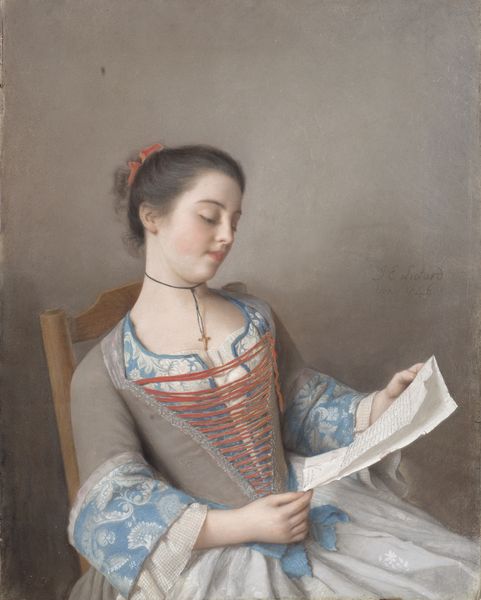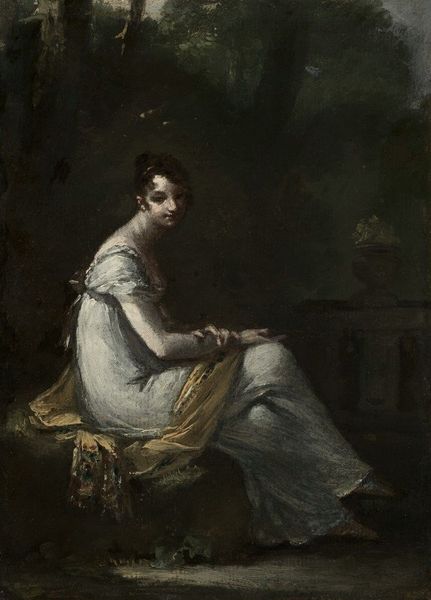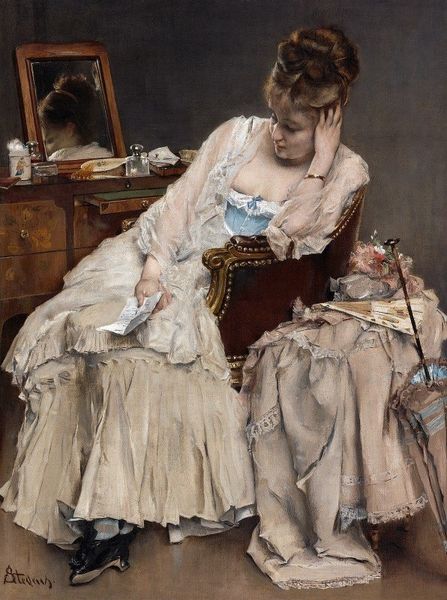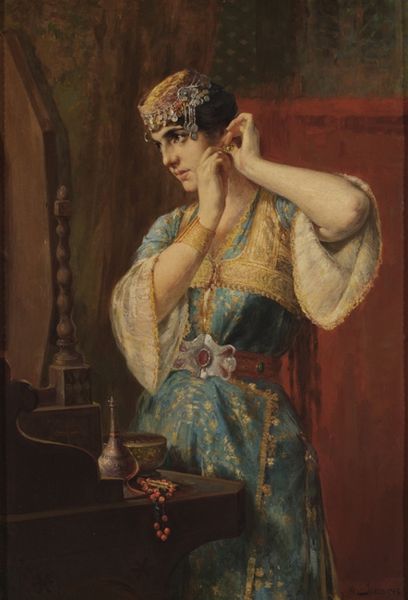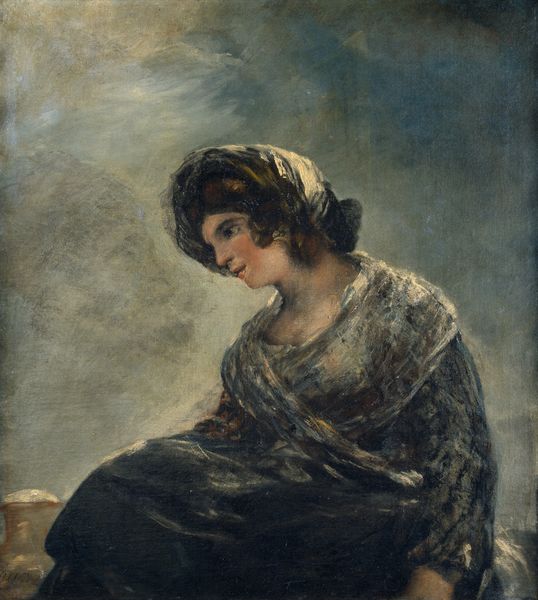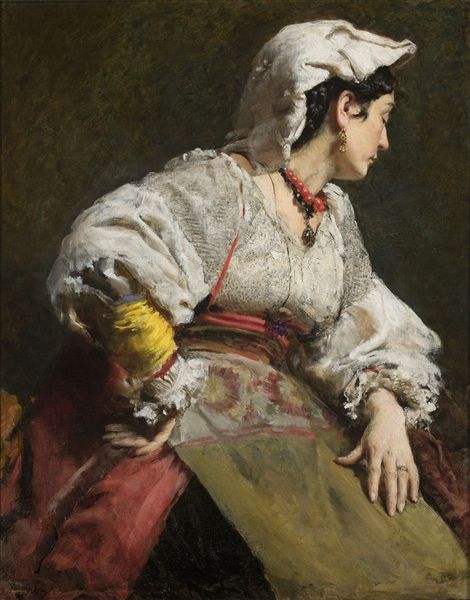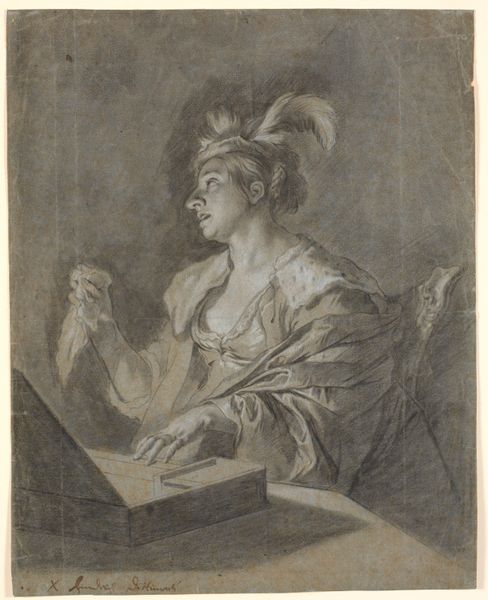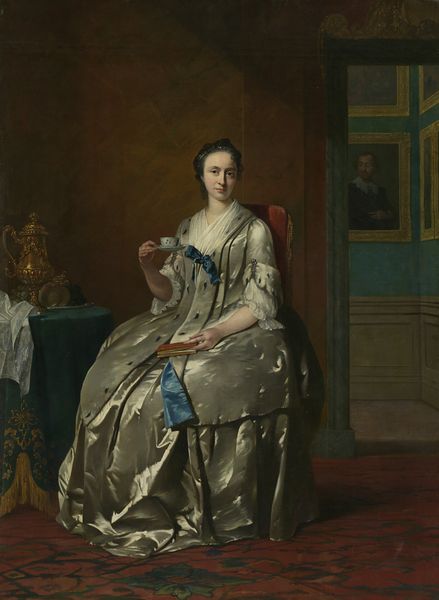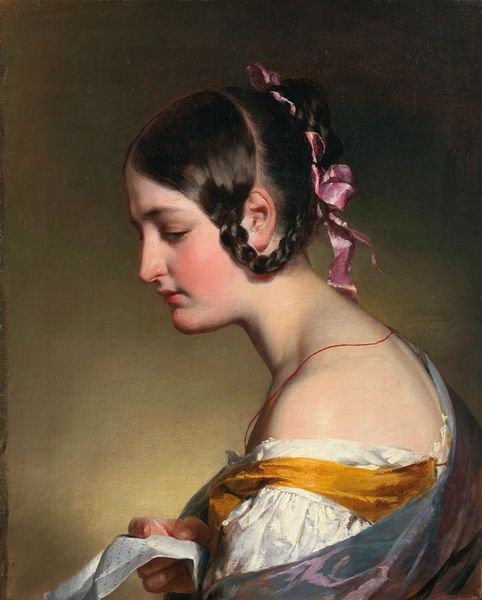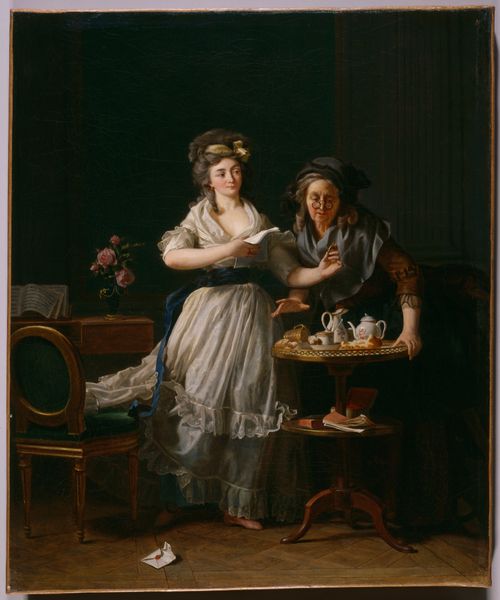
painting, oil-paint
#
portrait
#
painting
#
oil-paint
#
orientalism
#
genre-painting
Dimensions: height 33.5 cm, width 26.5 cm
Copyright: Rijks Museum: Open Domain
Editor: This is "Turkish Woman at her Embroidery Frame," painted by Jean Baptiste Vanmour around 1720 to 1737, using oil paints. It strikes me as an intimate glimpse into a very different culture, with such a focus on textiles. What draws your attention most about this piece? Curator: I find the representation of labor fascinating, specifically in how the painting highlights the materials and the *means* of production of embroidery. The canvas itself, the threads, the frame—they all speak to the material reality behind the image of oriental luxury that’s often portrayed in paintings of this era. Editor: So you’re saying the painting is more about the *making* than the woman herself? Curator: Not exclusively, but certainly, Vanmour brings our attention to the labor and skill involved. Consider how the artist has meticulously depicted the threads and the patterns of the embroidery frame. He’s showcasing not only the final product but the process and the materials employed. Where do these materials come from? Who has access to the embroidered product? The answers will likely involve international trade routes and specific class structures. Editor: I see! It’s interesting to think about the broader economic and social context implied by something that seems so decorative and simple at first glance. Does this connect to the "Orientalism" style at all? Curator: Precisely. Paintings like this were commodities themselves, traded and consumed within specific European social strata. So the act of painting, and the image itself, participate in that circuit of material exchange and cultural consumption. Where do you think that knowledge changes our interpretation of this artwork? Editor: I realize that, what appeared like a quaint snapshot now points to much larger issues of trade, labor, and representation. That adds layers of meaning that I hadn’t considered before. Thank you! Curator: Absolutely. Seeing art through a materialist lens opens up new pathways for understanding the intricate relationship between aesthetics and the wider world.
Comments
rijksmuseum about 2 years ago
⋮
Needlework was highly regarded by Ottoman women of all classes: sewing and embroidery were part of their education. Young women made their own trousseaux and embellished pillows, clothing, towels and napkins with beautiful embroidered floral motifs. In The First Day at School –on view in this gallery –the girl’s embroidery frame is brought along to school.
Join the conversation
Join millions of artists and users on Artera today and experience the ultimate creative platform.
